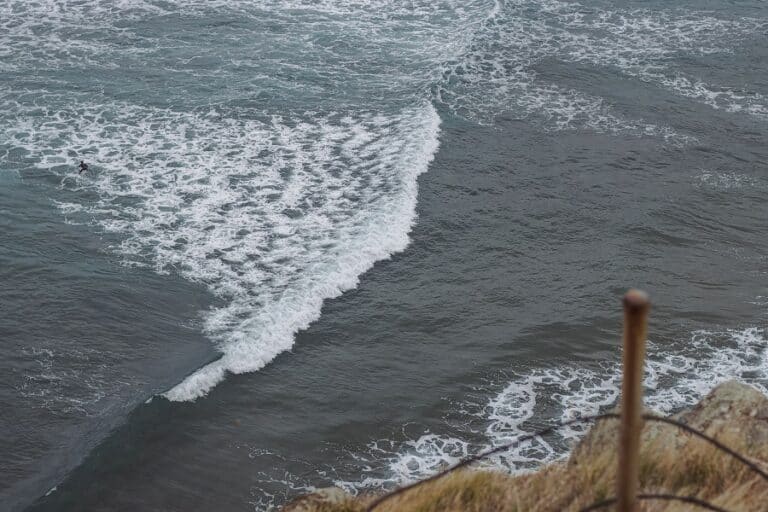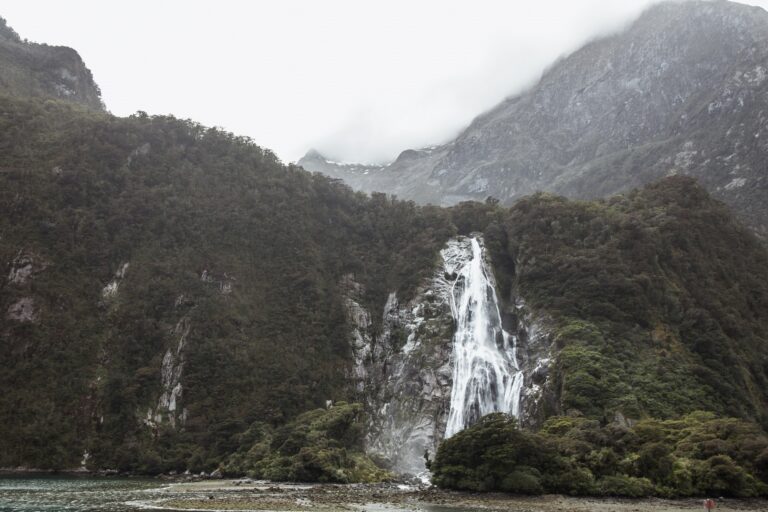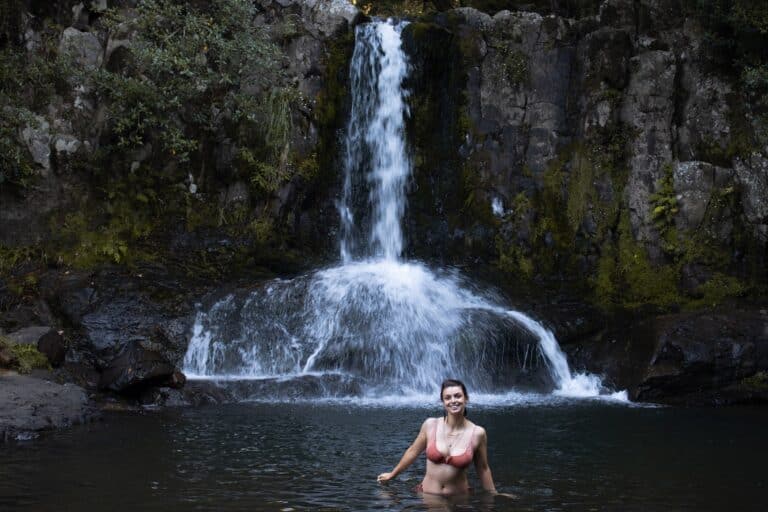Beautiful Kitekite Falls Walk and Piha Beach | Hiking in Auckland
Hiking in Auckland is possible if you’re keen for a bit of a drive. Kitekite Falls walk is a popular hiking trail and multi-tiered waterfall sitting in Auckland’s’ very own rainforest. This west Auckland waterfall sits right next to Piha Beach which is a popular destination fo surfers, photographers, swimmers and dog lovers.
Piha beach and Kitekite falls are great places to visit if you’re wanting a bit of adventure before or after an afternoon swimming at the beach.
The moderate 40-minute walk is enough to have anyone begging to get into the fresh, chilled water that tumbles from the rocky tiers above.
Home to an abundance of natural beauty and wildlife; native Kauri trees and countless native mammals and insects, the Waitakere range are a popular summer destination for locals and tourists to escape for a day. From the several day hikes and plenty of beaches It’s easy to get lost in the beauty of the Waitakere Ranges.
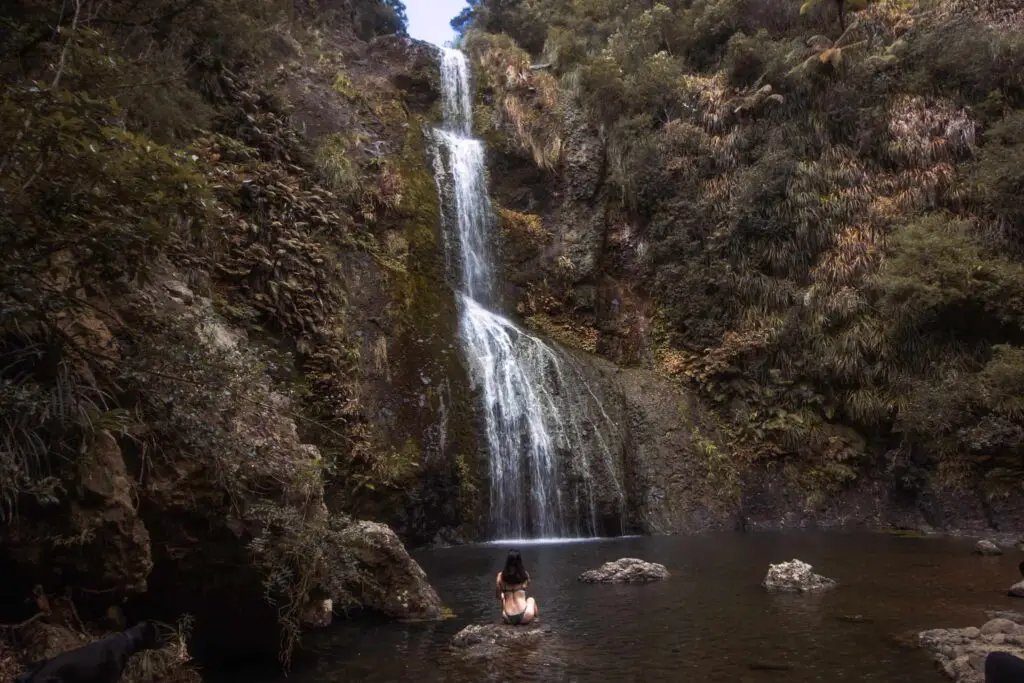
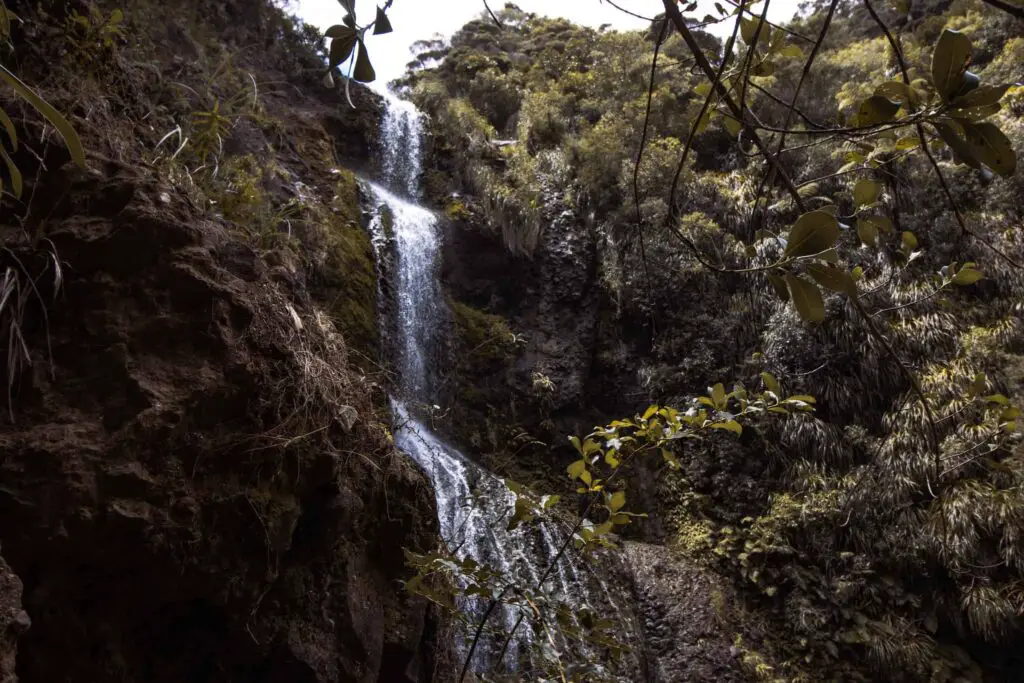
History of Kitekite Falls
Kitekite falls has an interesting history based around the milling of mature Kauri trees. The exact trees that today we are trying our best to protect. Between 1910 and 1921 the area around Kitekite was used for milling mature Kauri trees. The top of the falls were used as a dam, and the falls themselves were used to ‘transport’ the mature logs downstream, until after a few attempts resulted in the logs being obliterated by the rocks at the bottom.
Some remains of the dam can still be found in either the stream or ponds of Kitekite waterfall. Several years ago, a beam dislodged itself, fell and broke and half of it got wedged in the base of the waterfall between rocks.
Discover the Beauty of the Piha Waterfall
Kitekite falls is one of several waterfalls in Auckland waiting to be explored. And if you love hiking or looking for a great hike in Auckland then look no further, Kitekite is likely the most popular day trip and hike in West Auckland. Nestled in next to Piha beach it’s an easy escape from city life and everyday responsibilities. The 20 – 30-minute walk takes you along a winding dirt path through dense native bush. The walk can be a bit tiring depending on your fitness level, but the reward is totally worth it.
The 3-tiered waterfall totals a height of around 40 metres, the lower pool can be accessed via the path from Glen Esk Rd. The upper tier requires a slightly steeper climb for about 15 minutes to reach the top, from here you get magnificent views down the valley. Since it is quite a popular track it’s easy to walk it on your own without the fear of being completely isolated.
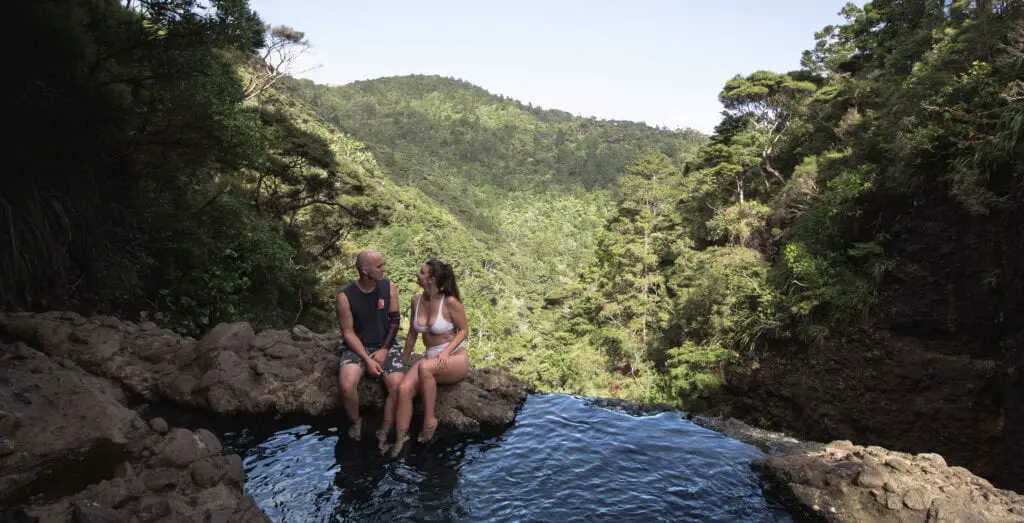
How to Get to Kitekite Falls Walk
Getting to Kitekite falls is easy if you have access to a private vehicle. The remote location and windy narrow sections of road means public transport only reaches as far as neighbouring suburbs of Henderson or Glen Eden. Small tour companies do run day trips to Piha but this is only during the summer seasons, otherwise you will need access to a private vehicle to visit Kitekite Falls.
Getting from Auckland City to Kitekite Falls
The drive from Auckland city to Piha takes around 40 minutes depending on traffic. Drive towards Piha and make your way to the end of Glen Esk Road where you will meet a large carpark and a sign for Kitekite waterfall. Remember to lock your vehicle and place any/all items in your car out of sight. Whether it’s in the boot covered with a towel or under the seats. Car break ins are common in carparks whether the owners are likely to be away for a while.
Walking to Kitekite Falls from the Main Carpark
The walk from Kitekite carpark to the bottom of the waterfall takes around 30-40 minutes depending on your fitness level. Always remember to stick to the path and don’t stray into the bush, this is to help prevent the spread of Kauri Dieback Disease, which I will explain later on down the page.
The first part of Kitekite hiking track is somewhat pushchair/buggy friendly as long as you have a couple of strong people willing to carry the stroller up and down the stairs near the waterfall. You will hear the waterfall well before you’re able to see it, which will help give you that extra push to get up the last incline before descending down towards the lower pool.
The main pool at the bottom of Kitekite falls is big enough for at least 3 people to enjoy, so don’t think you need to get ahead of the crowd to enjoy your moment in West Auckland’s fresh water.
Kitekite Falls Track – Getting to the Top
From the lower pool you can either set up for the day or continue up the other side of the stream to meet the path which takes you to the top. A slightly steeper hike but a much shorter distance and entirely rewarding for the view across the valley.
Make sure to wear shoes that you don’t mind getting wet as the rocks can be slippery and uneven to walk on when crossing the stream. I personally prefer making my way up to the top, as most people usually stop at the bottom, especially young families. The top pool is much smaller but with less people around you’re more likely to grab a photograph of you enjoying the scenery above the Waitakere Ranges.
The most popular photograph to get at Kitekite is the one where you’re sitting on the very edge of the waterfall, and there is no tricking the camera because you really are sitting on the edge. The drop below is staggered but a fall from any height will certainly land you in hospital if not the morgue. So be careful when scaling the rock pools to grab that popular ‘Instagram shot’.
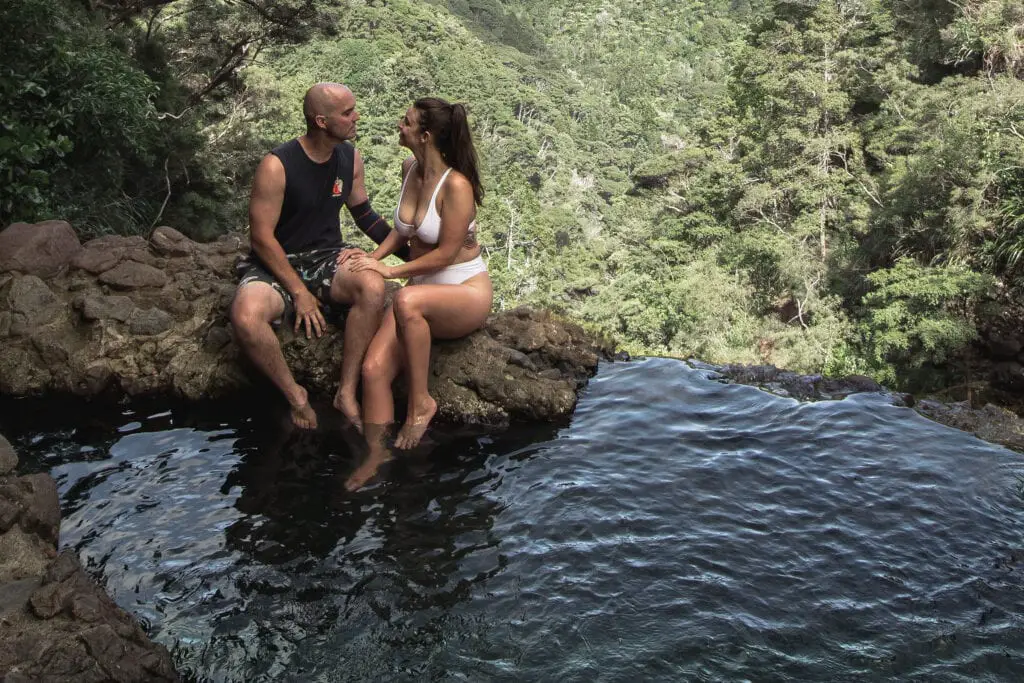
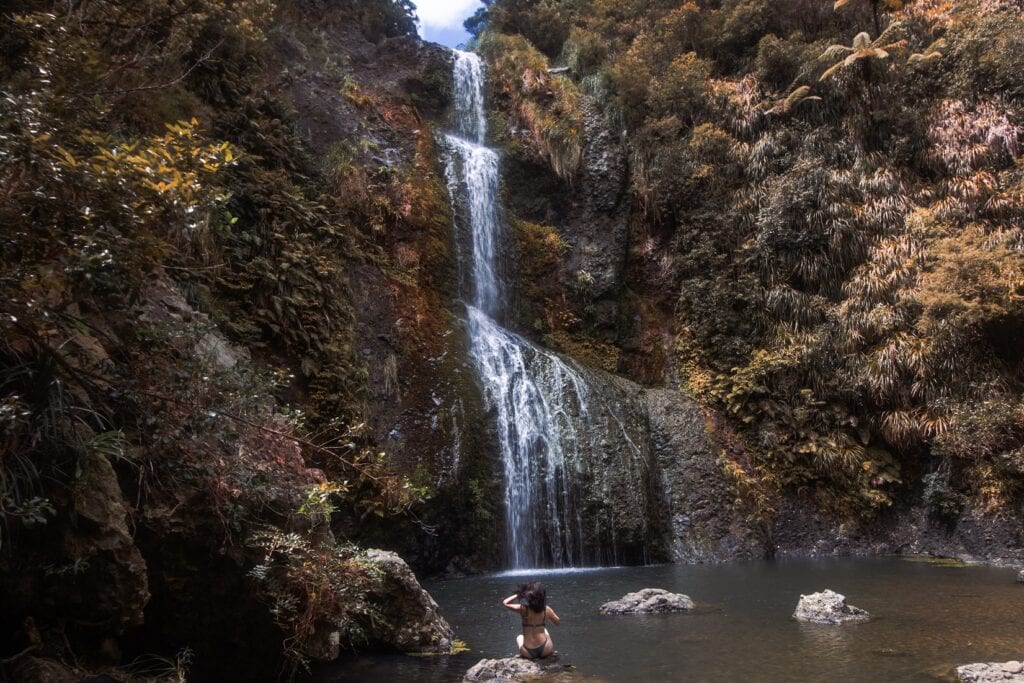
How to Get to Piha Beach
Getting to Piha beach from Kitekite falls is a very short and easy drive. Head back the way you came from the Kitekite falls carpark, and instead of turning left back towards civilisation you can either drive straight ahead towards south Piha, or turn right and make your way towards north Piha.
North Piha vs South Piha
Piha beach is separated into two areas; north and south Piha. These are marked by Lion rock which sits almost in the exact middle of the surf at the edge of the beach. Both areas are amazing places to experience the west coast surf but both serve slightly different purposes.
South Piha is where the Piha life guards patrol which makes it the safer area of Piha to swim. During summer you will find families, friends and individuals flock here for a day at the beach; whether they have come to jump in the waves or just to enjoy the sun and the sand
North Piha is more popular among surfers and dog walkers. Dogs are prohibited on South Piha but they’re more than welcome to run free North of Lion Rock. Surfers dominate this area as there is less of a chance of them colliding with a swimmer.
Help Protect Our Native Kauri Trees
Kauri dieback disease is rapidly spreading through the Waitakere ranges and killing our beautiful native Kauri trees. Kauri Dieback is a tree-related illness that is spread through particles in dirt and water. It’s easily spread when transferred via the bottom of your shoes, feet or any tramping gear.
Ensure you scrub and spray your shoes on entry and exit at the shoe cleaning stations. We want to keep views like this so help stop the spread!
After my first trip here in 2016 my parents followed suit and drove out for a mid-week bush walk. They only made it to the bottom of the falls before seeing that Thursdays is popular among naturists…
Dog Walking in Waitakere Ranges
Always double check the DOC website when it comes to where and when dogs are allowed at certain places and areas. A lot of the Waitakere ranges walkways are closed due to the Kauri dieback disease, which is a disease killing our native trees (as mentioned above). This is spread through movement of soil either by shoes and feet or via water sources like rivers and streams. So part of the process to mitigate the risk of further spreading the disease is to either require dogs to be on leads at all times when exploring the forest, or ban them from some tracks all together.
Please pay attention and respect these rules, and if your beloved dog is allowed to accompany you on a bush walk then please don’t let them roam free through the forest and make sure they stick to the paths.
Want More Waterfalls in Auckland?
Karekare Falls
Can’t get enough of West Auckland nature? Head a short distance back along Piha Rd, and follow your nose down Karekare Rd to find yourself at Karekare Falls. Karekare is another popular waterfall in the Piha area, favoured for its easy walking track and short distance from the carpark. Karekare waterfall is perfect for those families with young children or for those who can’t walk far distances but still want to immerse themselves in the beauty of West Auckland.
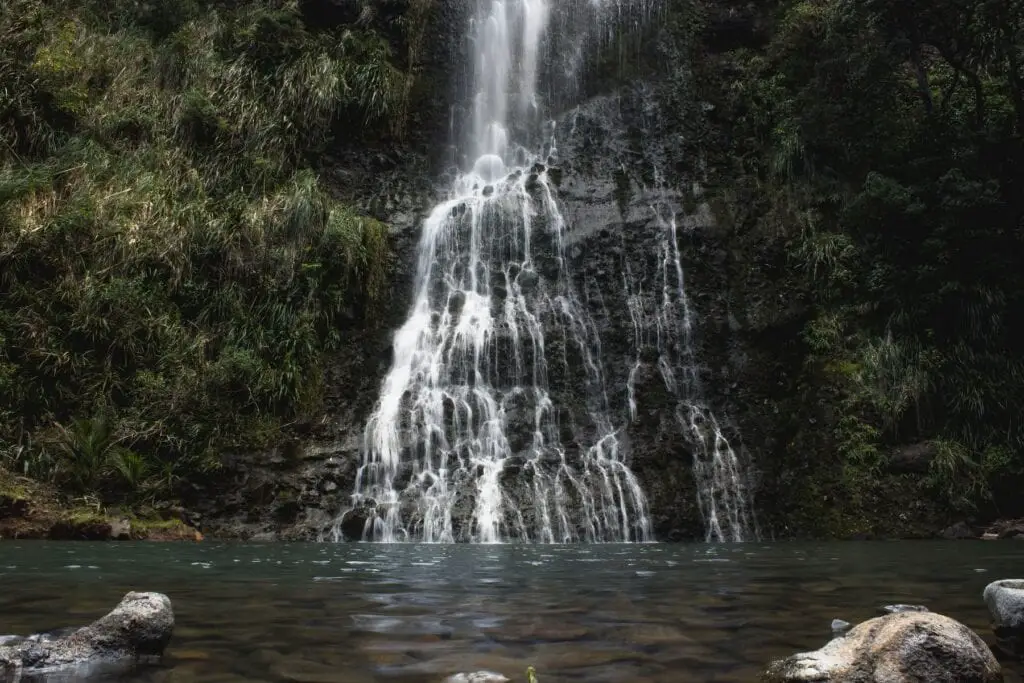
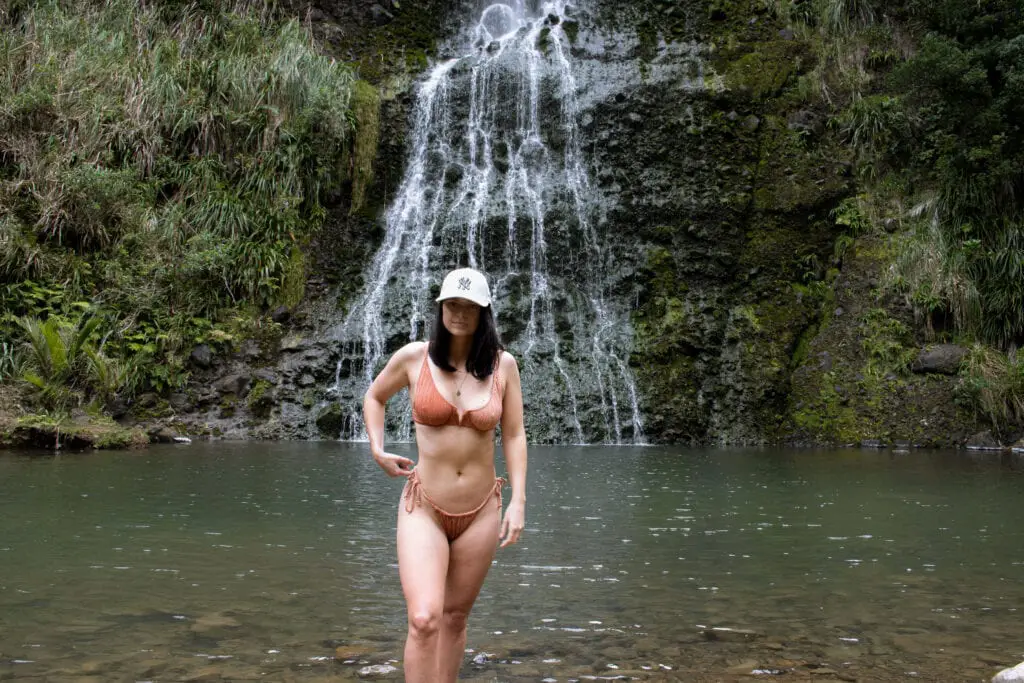
Mokoroa Falls
This is another amazing waterfall in West Auckland. Getting to Mokoroa Falls from Kitekite is much further than travelling to Karekare Falls, so I would suggest leaving the trip for another day unless you’re on a mission to discover as many amazing waterfalls in Auckland as possible. Dogs are not allowed on this track, so your favoured pooch will need to be left at home. Swimming is possible at the bottom of Mokoroa falls, the pool isn’t too deep as rock falls are common from the top of the falls so don’t get to close to the rock face, (I was made aware of this once I researched the falls after the below picture was taken.)
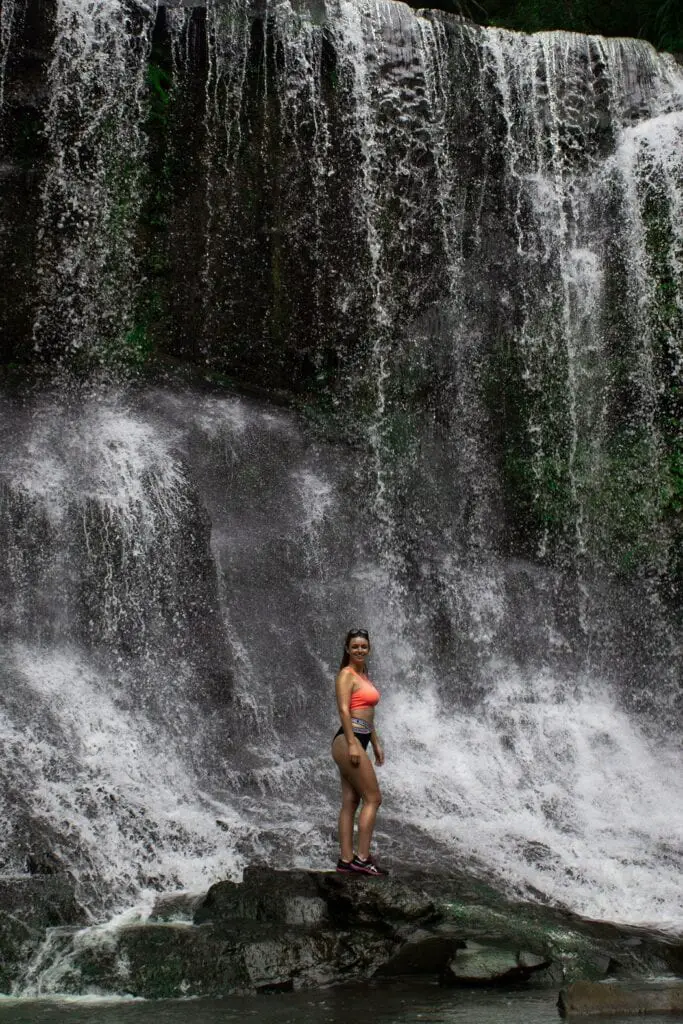
Kitekite falls is by far one of my most favourite bush walks in Auckland and I think everyone who visits the city should get out and explore the natural beauty of Auckland; because the concrete playground of the city shouldn’t be the only thing that attracts tourists. So next time you’re in the city, or even if you’re just passing through; drive out to one of our wild west coast beaches and explore one of our largest native rainforests.
